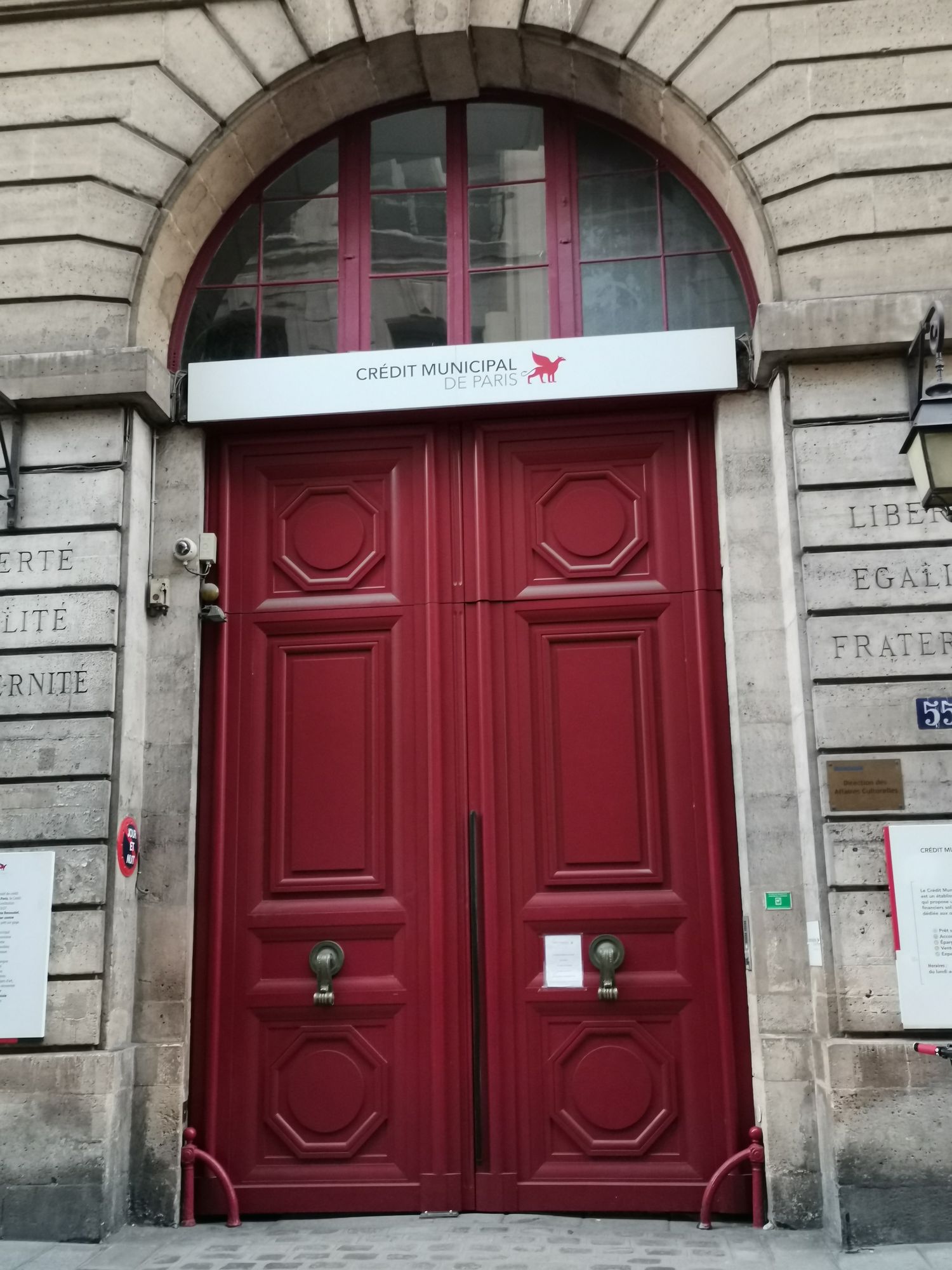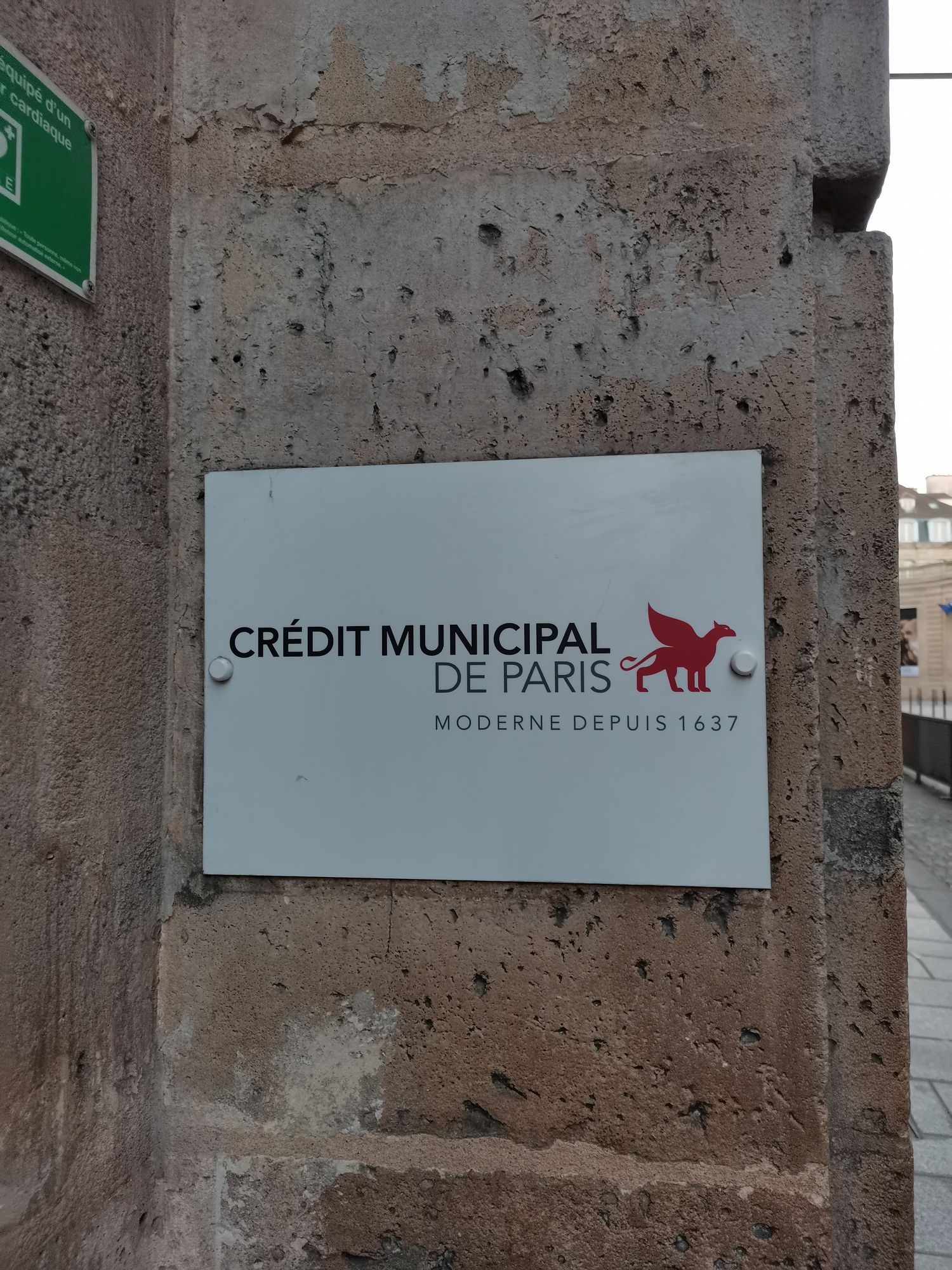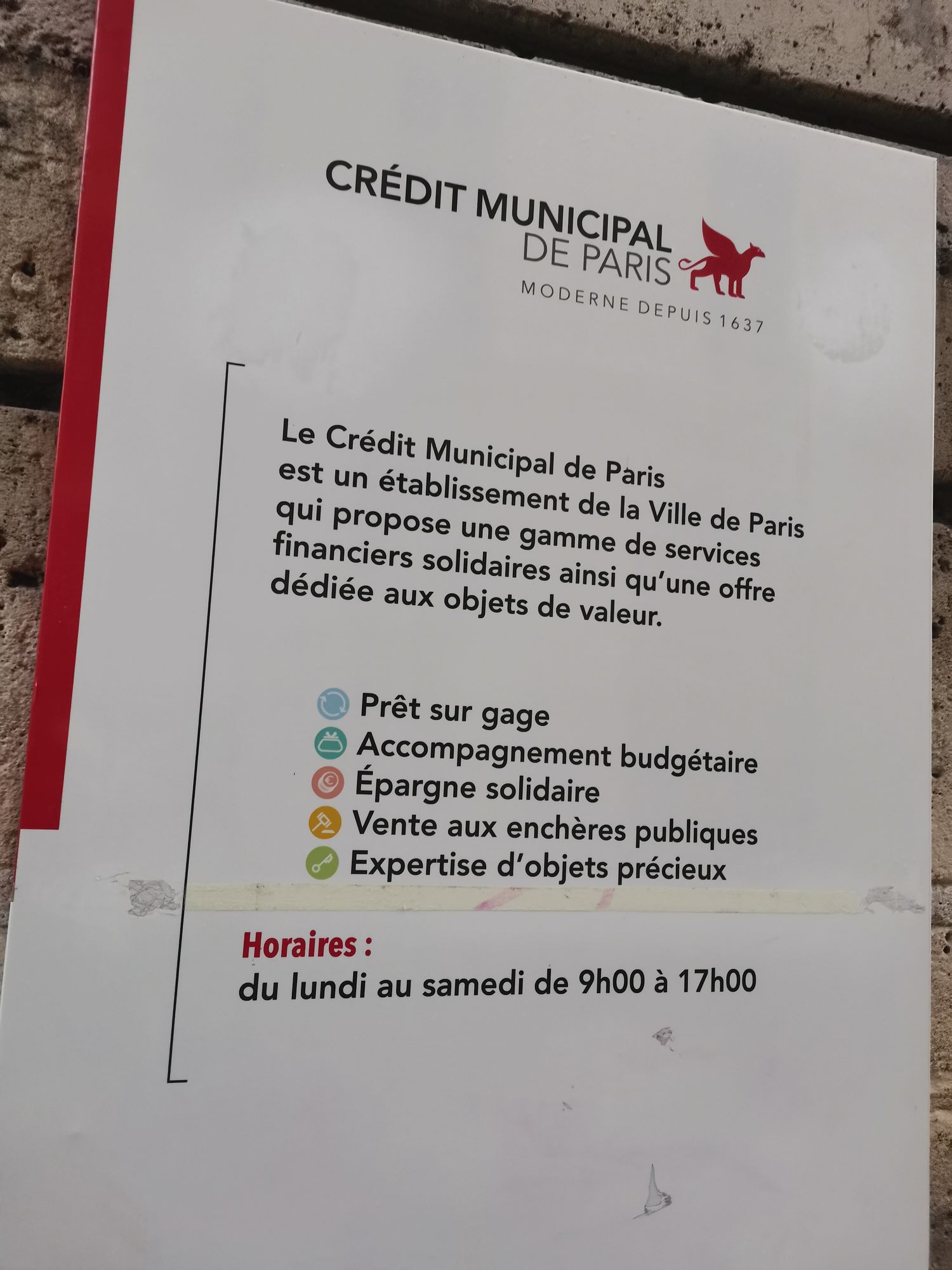Crédit Municipal of Paris (CMP) or Mont-de-Piété

Where is Crédit Municipal de Paris located?
The CMP is located at 55, rue des Francs-Bourgeois, in the 4th arrondissement of Paris. Its premises include an auction room and a deposit room.
When was Crédit Municipal de Paris (CMP) founded?
Crédit Municipal de Paris, formerly known as Mont-de-Piété, was founded in 1637. It is a historic financial institution of the city of Paris. It provides pawnbroking services, enabling individuals to deposit valuable objects in exchange for immediate loans, generally representing 50-70% of the objects' market value.
The history of the CMP goes back to the original idea of the Italian Monte di Pietà, created in 1462 to combat the catastrophic indebtedness of the poor, victims of usurious rates charged by banks.
The first French Mont-de-Piété appeared in Avignon in 1577.
How do you define the architecture of the CMP building?
 The architecture of the Crédit Municipal de Paris (CMP) building, formerly known as the Mont-de-Piété, is a blend of architectural styles reflecting its centuries-old history. The building has evolved over the centuries to become the emblem of this historic financial institution.
The architecture of the Crédit Municipal de Paris (CMP) building, formerly known as the Mont-de-Piété, is a blend of architectural styles reflecting its centuries-old history. The building has evolved over the centuries to become the emblem of this historic financial institution.Architect and origins: The building that today houses the CMP was constructed on the site of the remains of Philippe-Auguste's enceinte and an ancient tower dating from the 16th century. The latter were discovered during renovation work in 1883. The door leaves at the entrance to the building are listed as a historic monument.
The CMP building features a mix of architectural styles that bear witness to its long history. The Marais, where the CMP is located, is a district of Paris rich in historic architecture, and the building blends in well with the surrounding landscape. It features elements of 18th-century architecture, and some architectural details are reminiscent of the neo-classical style in vogue at the time.
Today, the historic remains of the building, such as the layout of Philippe-Auguste's enclosure (built between 1190 and 1210), are preserved and exhibited on the premises of Crédit Municipal de Paris. This approach reflects our concern to preserve the institution's history and heritage.
In short, the architecture of the Crédit Municipal de Paris building is steeped in a rich and varied history. It incorporates elements of the 18th century and is reminiscent of the neo-classical style, while retaining historical vestiges that add to its charm and importance as a historic financial institution of the city of Paris.
How has the CMP evolved over the centuries?
A history of social commitment
The institution has evolved over the centuries to become an important support for the people of Paris. In its early days, the Mont-de-Piété offered an alternative to the usurious rates charged by loan sharks. In the 18th century, under the reign of Louis XVI, the Mont-de-Piété was re-established to combat the usurers, and found its place in the Marais at its current location.
How did the CMP become a popular credit institution in the 20th century?
In the 19th century, Napoleon granted the Mont-de-Piété the monopoly on pawnbroking, and new branches were opened to meet the growing needs of the Parisian population.
In the 20th century, the establishment evolved into a popular credit institution. In 1918, by decree, it became Crédit Municipal de Paris and expanded its banking activities beyond pawnbroking. Crédit Municipal de Paris has continued to evolve and adapt to the needs of the population.
How is CMP structured today?
In 1992, Crédit Municipal de Paris came under the responsibility of the City of Paris, its sole shareholder. In 2005, CMP reorganized to separate its banking sector from its traditional pawnbroking activities. The subsidiary CMP Banque manages the group's banking sector, while Crédit Municipal de Paris concentrates on its traditional art object activities.
What services does CMP offer today?
 Crédit Municipal de Paris continues to offer pawnbroking, as well as auctions, appraisals, and the conservation of works of art. In addition, the CMP offers support services for overindebtedness, personal microcredit schemes and solidarity savings schemes.
Crédit Municipal de Paris continues to offer pawnbroking, as well as auctions, appraisals, and the conservation of works of art. In addition, the CMP offers support services for overindebtedness, personal microcredit schemes and solidarity savings schemes.What are the statutes of Crédit Municipal de Paris?
Crédit Municipal de Paris is a public credit and welfare institution. It operates in accordance with banking and consumer regulations. Caisses de Crédit Municipal, such as CMP, are defined by law as municipal public credit and welfare institutions. Their primary mission is to combat usury, notably by granting loans against pledged property, for which they have a monopoly.
Crédit Municipal de Paris is also a credit institution under the Banking Act of 1984. It is subject to supervision by the Autorité de Contrôle Prudentiel et de Résolution (ACPR) and to banking prudential rules. CMP plays an important role as a financial and social institution serving the people of Paris.
Summary return of the private mansions of the Marais